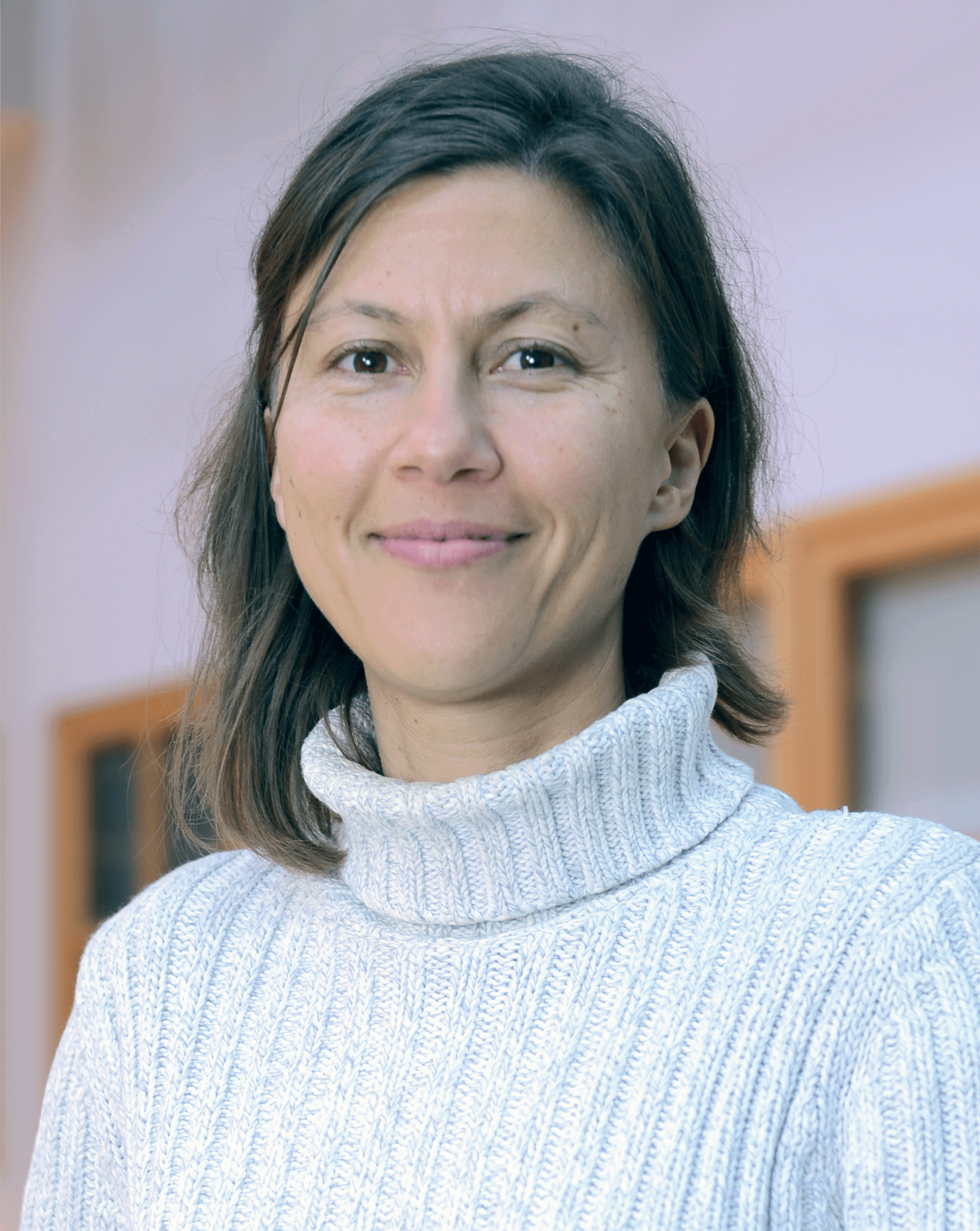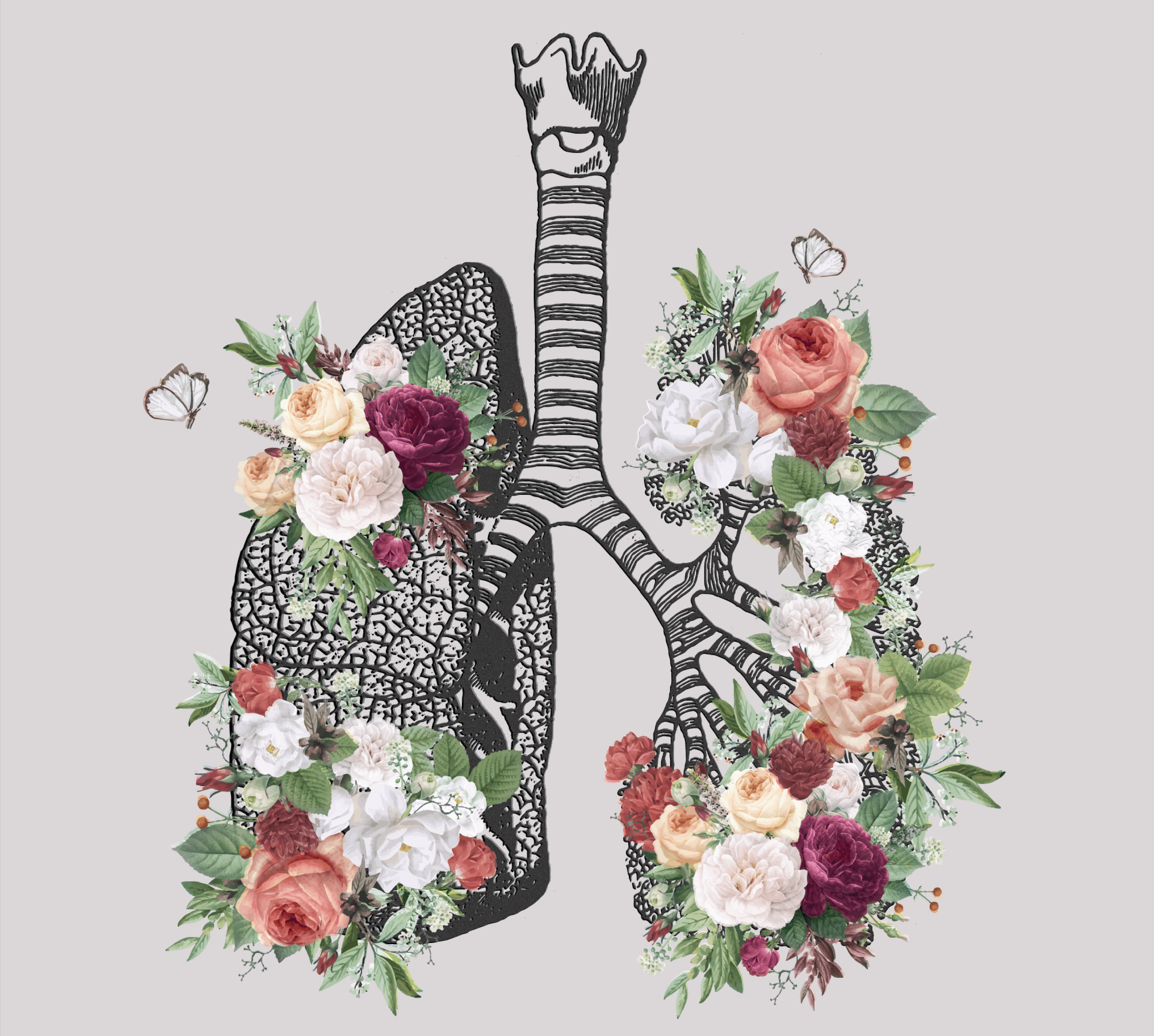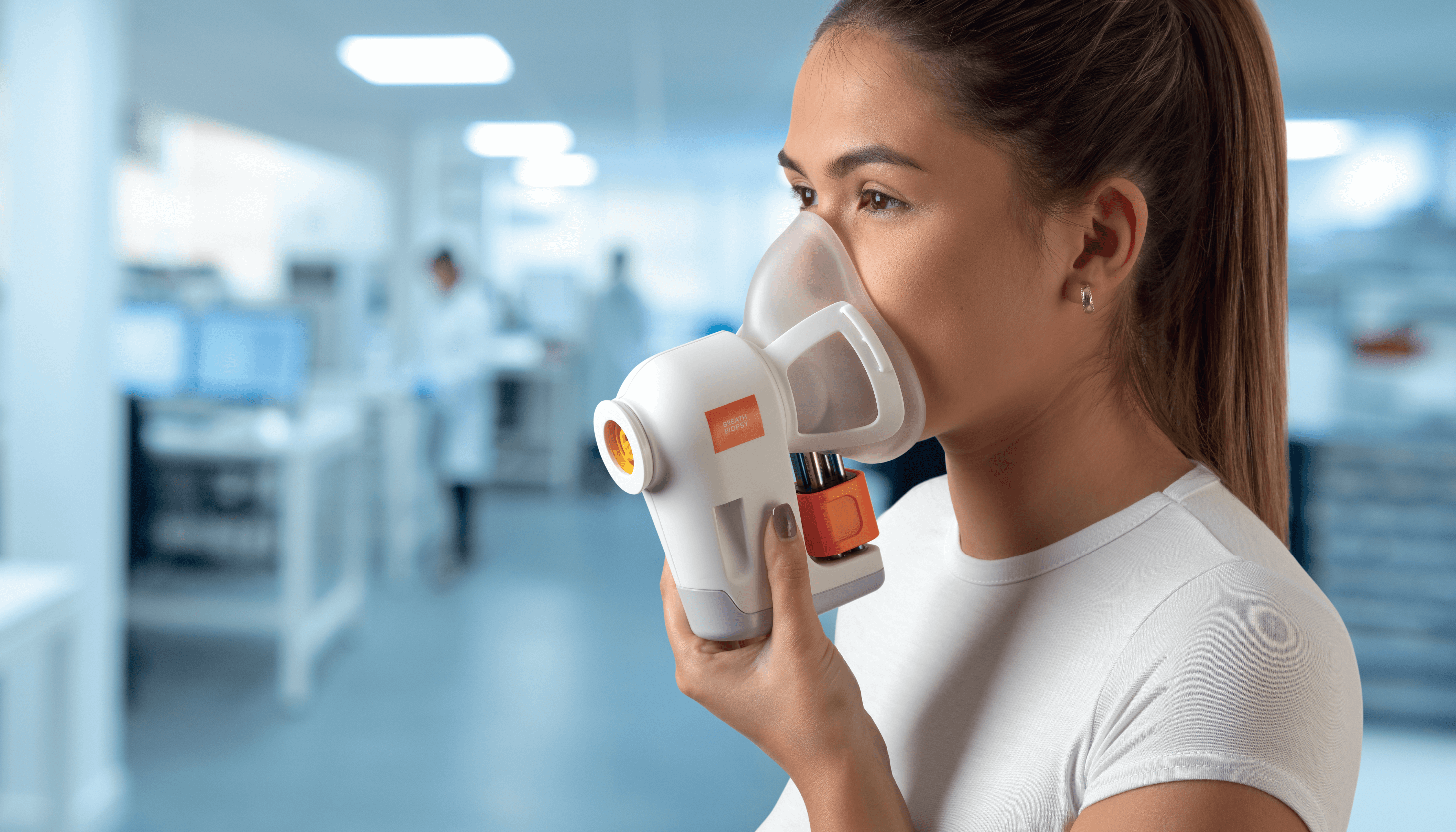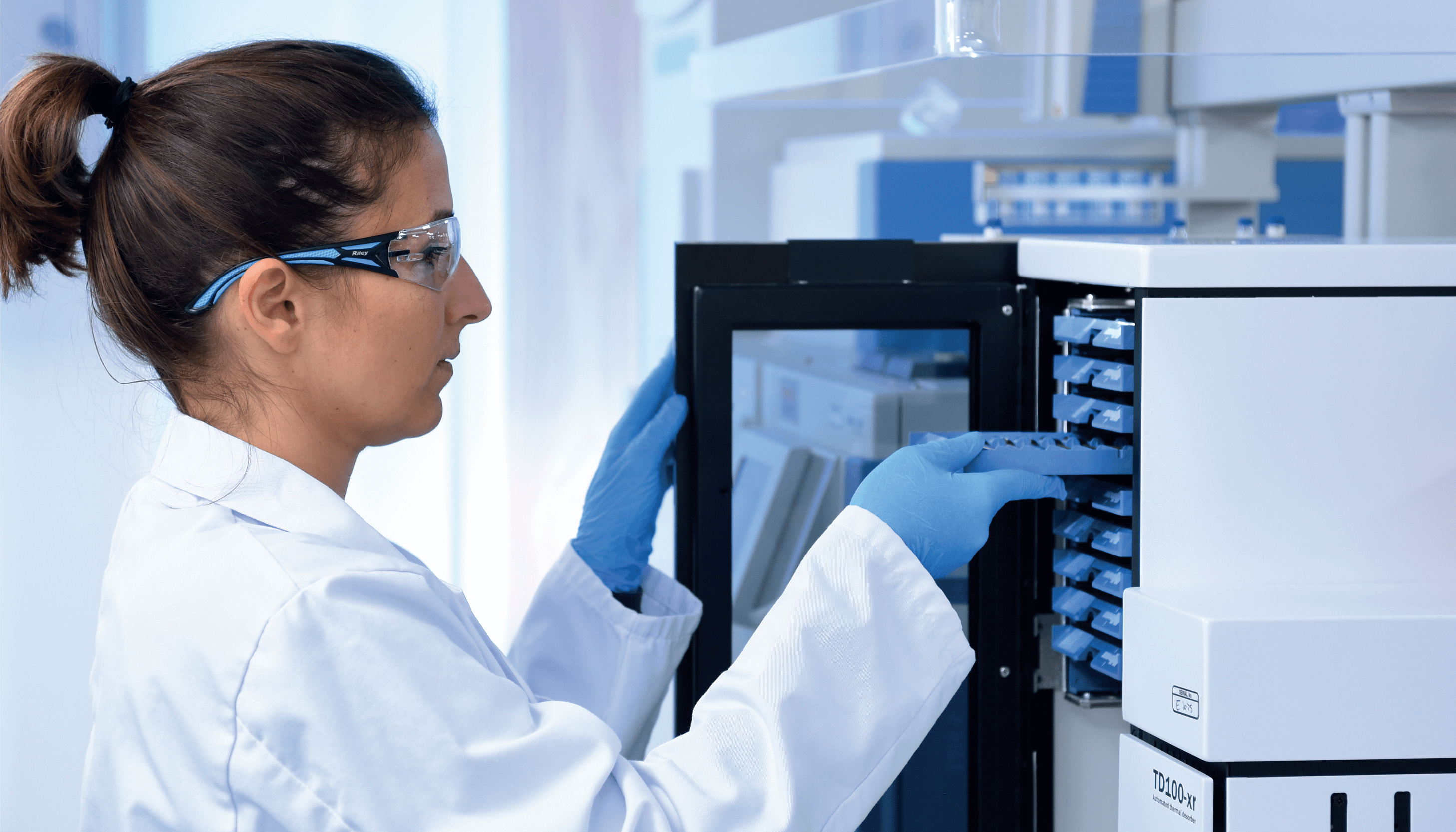From cancer to diabetes to the recent rise of COVID-19, we will all likely come face-to-face with a threat to our health. Contemporary medicine has ever-improving tools to identify and combat diseases, but there are gaps – in speed, in invasiveness, in coverage, in access, and in accuracy. Can we do better? And how can we ensure that new approaches provide the same level of diagnostic potential as those currently in service?
Here, we speak with Jane Hill, Associate Professor of Engineering, and Billy Boyle, CEO of Owlstone Medical, to find out how their research in the arena of breath analysis is opening new diagnostic doors.
With Jane Hill, Associate Professor of Engineering, Thayer School of Engineering at Dartmouth, USA
Breath samples contain specific molecules (biomarkers) that can paint a picture of a patient’s health. A given biomarker may demonstrate detectable changes, such as an increase or decrease, when a specific disease is present, and this relationship is established through statistically robust testing across large patient populations. Conducting diagnosis in this non-invasive and immediate way has a transformative potential for respiratory medicine in particular, and for improving patient quality of life.
Breath testing uses a number of highly sensitive techniques and specialist equipment, including secondary electro-spray ionization MS (SESI-MS), an ambient ionization technique with MS detection that facilitates the analysis of trace concentrations of vapors, and GC×GC-MS. These techniques are particularly useful in the case that a biomarker has not yet been established for a particular disease, allowing us to investigate a large range of molecules and identify subtle yet informative changes in breath composition.

My first introduction to the analysis of vapor came from an interest in how proteins were charged and attracted into a mass spectrometer. This led me to SESI-MS volatile analysis as a science, and developing approaches to apply to medical applications. Naturally, the most obvious application areas are respiratory infections, which are traditionally difficult to diagnose (it is hard to get a sample from the depths of the lungs) – never has this been more obvious than with the coronavirus pandemic.
Of course, COVID-19 only appeared recently, but other respiratory infections are plentiful. Tests of disease etiology mainly rely upon sputum samples and, although some tests are relatively rapid, extracting meaningful information from sputum can take weeks. Moreover, around a third of the population is unable to produce sputum, and both children and HIV patients struggle to produce lower lung samples further complicating reliable diagnoses. Many people, particularly our most vulnerable, therefore go without diagnosis, potentially leading to serious consequences, including, sadly, death. Much of our work falls under paediatric medicine for this reason; the fast detection time and non-invasive nature of a breath test offers clear advantages at the point of care. We also work in intensive care units, where we diagnose acute respiratory infections, as well as diagnosing and monitoring chronic illness and patient treatment responses.
Our focus is primarily diseases of the lung. One of our main interests is in tuberculosis, which is the biggest killer of all the infectious diseases, killing around 1.5 million people each year. Tuberculosis diagnosis is challenging for a number of reasons. For instance, up to half of patients co-infected with HIV can go undiagnosed as current tests falter when HIV is present.
We also work on other bacterial species, including related mycobacteria, that are difficult to identify with standard clinical methods. The other major area of our work is patients who have cystic fibrosis, for example, where current diagnostics face unique challenges. Unlike the majority of other lung conditions, infections in cystic fibrosis are polymicrobial, meaning that identification of the primary pathogens in the milieu of benign organisms can be challenging. Our ability to monitor changes in a patient who is currently undergoing treatment for cystic fibrosis also allows us to interrogate the effectiveness of their prescribed eradication therapies. However, the current diagnostic procedures rely on sputum samples which, with new treatments designed to clear mucous, will become harder to access. Our breath analysis circumvents this issue.

The challenges associated with delivering a reliable breath test are many and tough to overcome. We’ve had to carefully consider every aspect of test development, from sampling techniques to clinical study design, instrumentation, and data analysis, all before we could even start to consider the choice of biomarkers that will drive the test.
We know that volatile organic compounds (VOCs) can be sampled quickly and non-invasively from breath. When these compounds are produced through normal metabolic processes within the body, detectable changes may indicate the presence of a specific disease. If this change is limited to a single molecule and can be verified statistically across a clinical population, you have an ideal biomarker for use in a diagnostic system. Unfortunately, such definitive biomarkers are rare in our complex biology, and we have to look more expansively at multiple changes in several detectable chemicals, which increases the necessary sophistication surrounding our studies.
There are a lot of infectious diseases out there – with COVID-19 being a particularly topical one... We hope to explore the opportunity to combine a number of technologies to drive COVID-19 identification, such as our breath analysis system and a nucleic acid amplification method. Viruses are traditionally harder to diagnose, and patients present with non-specific signs and symptoms due to generalized inflammation. We have had success in this area, though – we were recently able to differentiate influenza A from B using breath analysis in animal subjects. Next? Establishing the potential efficacy of this approach in humans, hopefully allowing subsequent application in triaging for coronavirus carriers.
The future of such tests will rely on clinical translation, both for diagnostic use and for tracking treatment response. Reducing these tests to handheld devices represents a major focus. The ability to rule out tuberculosis infection using a handheld device in the field would have a dramatic effect on our healthcare approach, and on our ability to contain infections. This also holds true for vulnerable groups, such as lung transplant patients and children with cystic fibrosis, for whom early diagnosis represents a top priority. There are certainly challenges to address in reducing the systems to such small devices, but we hope that these questions will be answered in time.
With Billy Boyle, CEO, Owlstone Medical, Cambridge, UK
Growing up in Belfast, I was a typical geeky kid who loved computer programming and electronics. Engineering was an obvious choice for my undergraduate degree, and the engineering degree at Cambridge University appealed to me because you do two years of general engineering before you specialize. Plus, I loved Cambridge as a city – my brother studied there and I had happy memories of visiting him.

Towards the end of my course, my director of studies offered me a summer research project on micro- and microelectromechanical systems (MEMS). I jumped at the chance, largely because I owed the college money and was at risk of not being allowed to graduate – this was a way to clear my debt!
Working with him was phenomenal. I had a great time and happily agreed to join the group for a further three years. It was through the Cambridge MEMS group that I met David Ruiz-Alonso and Andrew Koehl, who worked on superconductors and chemical sensors, respectively. We all had an interest in starting a business, and they ultimately went on to become my co-founders at Owlstone Inc. Today, I’m CEO of Owlstone Medical, which was born out of our expansion from industrial chemical detection and sensing.
Simple: to save 100,000 lives, and £1.5 billion in healthcare costs. Our vision is equally concise: to be the global leader in Breath Biopsy® for early detection and precision medicine.
We had wanted to focus on ubiquitous chemical sensing since the company’s inception, which soon led us in the direction of instrument development, and eventually to a full-service testing model. Later, we decided to focus on the issue of cancer detection – an issue very close to my heart after my wife’s cancer diagnosis. It’s incredible that survival can be up to ten times more likely with early detection – it seems clear this should be an absolute focus of more research. Coupled with an increasing number of publications on VOCs associated with cancer, we recognized an opportunity to position our business to make a real difference for patients.
When you’re faced with a question like “is there a biomarker for cancer?”, there are two components you must juggle to answer it. First, you must discern if there is an actual underlying biomarker – some kind of altered metabolism linked to a plausible biological rationale – that can be detected. The next consideration is how these markers can be monitored, if they do exist. We opted to volatilize the metabolome in exhaled breath.
A number of specialists collaborate to answer these questions. The breath omics community (comprising data scientists, biologists, metabolomics experts and so on) is mostly interested in the analytical side of things, while clinicians identify a clinical need and work backwards to the analytical approach needed to fulfil it. An engineering mentality bridges these approaches by asking the right questions at the right time. That’s one of the truly exciting components of building our diagnostic platform and business – bringing together an interdisciplinary team that covers discovery capability and speedy biomarker identification.

The platform consists of two streams, one for when we know what chemicals we are looking for, and one for when we do not. For biomarker discovery, we use GC-MS to separate and identify VOCs, – but development is ongoing and associated with many challenges. First, the VOCs reported previously in literature demonstrated little agreement between them – many of these results also come from pilot studies, lacking validation in an independent cohort. Second, there is the technical challenge of collecting a high-quality, reproducible breath sample. We are tackling the former through a robust discovery workflow. The latter I’m pleased to say we’ve ticked off the list with a specialized collection device – the ReCIVA® Breath Sampler. Development of the sampler alone relied on investment of around £2 million. When we do know what chemicals we are looking for, for example, once biomarkers have been identified and validated, we are able to deploy our own proprietary analysis system based on Field Asymmetric Ion Mobility Spectrometry.
We were fortunate to receive an SPRI grant for our lung cancer studies, and that gave us the time and space to gather a team of engineers for sampler development, eventually leading to the breakthroughs that became the foundation of the aforementioned “Breath Biopsy” platform. Today, these biopsies are used to identify VOCs associated with not only lung cancer, but also colon cancer – and we have active clinical trials in both of these areas. LuCID is a multi-centre prospective trial for lung cancer screening; Phase I is complete, Phase II is ongoing. And we are currently running a patient trial called InTERCEPT, which is assessing the potential of a screening test for the early detection of colorectal cancer. We are also working with commercial and academic partners to explore the utility of Breath Biopsy in liver disease, respiratory disease, environmental exposure, and other areas.
Because it’s easy – at least for the patient! If testing is less invasive, patient compliance is increased. Compliance is a huge issue across all areas of medicine, but is particularly prevalent in tests for conditions like colon cancer, where compliance can be 50 percent or lower, or in lung cancer, where, in the United States screening guidelines are in place but where compliance is under 4 percent. A simple breath test is, of course, much preferred to colonoscopy for example, and the underlying biology remains sound. Breath is, however, a highly dynamic sample, in which analytes can vary in their concentration by up to five orders of magnitude. Tests with high-resolution and accurate mass measurement are needed.
People have been talking about breath biopsies for a long time, but we haven’t witnessed any real breakthrough successes. The exhaled urea test for Helicobacter pylori is one example of a breath test in regular use, but this is not VOC-based. An initial success would push the field forward by creating a solid set of data that future ventures can feed off. At the moment, companies are relying largely on chemical sensors with inherent technology limitations, such as issues with sample acquisition. And that’s the very issue we set out to solve first with our ReCIVA collection device.
Much of the project has evolved as we’ve developed an understanding of the nature of the challenge in front of us – I anticipate this will continue. One of the main tasks we face is continually reducing the chemical noise – there’s a never-ending cycle of improvements that can be made regarding the quality of sample obtained. Biomarker identification will also expand in terms of both top-down and bottom-up approaches.





